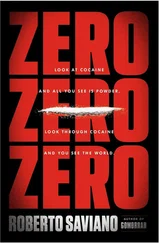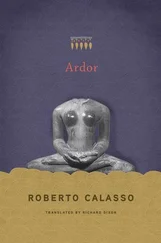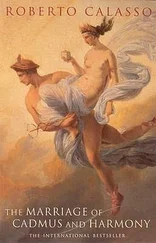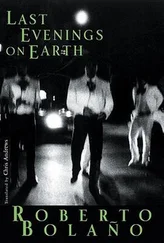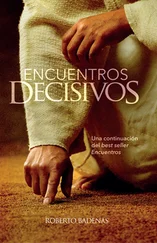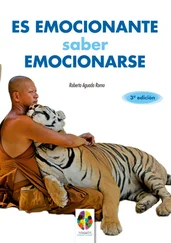Soon the women reappeared. This time they had needles in their hands. Gold, silver, and bronze. Gold, the mahiṣī ’s, silver the vāvātā’s , bronze the parivṛktā ’s. Many, many needles, as many as the pearls that the same women had earlier threaded to the horse’s mane and tail. When the wives threaded the pearls to the horse’s hairs, other women from their procession would hang seashells on the hairs too, to keep the pearls from falling. Nothing of what was offered could be lost. Each had a hundred and one needles. They went up to the horse and delicately marked out lines on its body: they were drawing “the paths of the knife.” As they did so they never stopped repeating the appropriate formulas. You would hear: “May the human wives prove able to divide your hide with wisdom”; “The needles weave and weave on the hide of the fiery horse.” Like land surveyors, like surgeons , the women traced out geometric shapes on the lifeless body of the animal who only shortly before had been, at least for one of them — and she represented all the others — a lover. The onlookers saw no more than three women intent on their work around the horse, as though around a loom. They weren’t in a position to follow the lines the needles made. But they knew that the three wives would divide the skin into thirty-six parts, like a chandas , a meter. That great hunk of dead flesh was to be broken up like a line of poetry.
The horse’s hide had now been etched out, if not actually cut open. But inevitably there comes a point when blood must be drawn. The adhvaryu stepped forward with a blade of grass and a knife with a golden hilt. He placed the stalk on the horse’s belly, then severed the animal’s skin immediately beneath the blade of grass. But who was the agent of this action that was irreversibility itself? Who? — the adhvaryu asked himself, as the knife began to probe the entrails. And the answer was: Ka . Which means: Who? The answer to the question was another question. And everybody knew that that indefinite subject, forever undefinable— who? — was the secret name of the one person whose existence was in no doubt: Prajāpati. If Prajāpati was Ka, all the more so was the anonymous priest at the moment he buried his knife in the horse. Action, at its source, has an unknown subject. Looking at the horse, the adhvaryu would murmur: “Who is slicing into you? Who is cutting you to pieces? Who is your wise quarterer? It is Ka who is slicing into you. It is Ka who is cutting you to pieces. It is Ka who is your wise quarterer.” But where is Ka to be found? He was never among the other gods, as he was never among men. He was so discreet, so elusive that many thought they could do without him. But then everything would break down. Neither gods nor men can live without recourse to Ka. To be precise: they may survive, but they cannot understand. But how to understand Ka? He’s as obscure and elusive as his name is commonplace. There was another word that was at once obscure, elusive, and commonplace: ātman , “Self.” Another pronoun, this time a reflexive pronoun. Were they the same perhaps? The knife was raised. All gods, all men, all meters, all powers: everything in that moment, the moment of the irremediable gesture, dissolved before that one syllable, Ka, that evocation of an ever unknown subject, who with great ease gathered every name, every other being who could claim to be a subject, within himself. The rest was butchery.
When Prajāpati “saw” all his desires and everything he would like to achieve, he also saw the aśvamedha . “By sacrificing therewith, he obtained all his desires and attained all attainments.” Perhaps this is why the fulfillment of all desires has been looked on with such suspicion ever since. For that fulfillment implies a death. Or rather: a killing. What is most obscure here, what was always obscure and will ever remain so, lies in the answer to the question: what happened exactly when Prajāpati “saw” the aśvamedha and “sacrificed with the aśvamedha ”? Prajāpati was, among other things, a white horse. And likewise “the first sacrificer.” But on this occasion was he horse or sacrificer? Was he the horse who was sacrificed or the sacrificer who killed the horse? Never did active and passive come so close to each other, to the point that they were superimposed one over the other, confused one with the other. It was not out of a desire to conceal things that this question remained obscure. Its very nature was obscurity, whatever one might try to make of it. “Being active or passive,” thought Prajāpati, “doesn’t make that much difference. Or, at least, it doesn’t make the enormous difference men will see there. Every active is someone else’s passive. But this is a truth that, in the normal way of things, would confuse men’s minds rather than illuminate them. If they accepted it, everything would become hopelessly tangled. And this is the reason why a part of the teaching must remain secret: to prevent the course of world events from being paralyzed by knowledge; to create a situation where the only people who can gain access to knowledge are those who, even when imbued with it, will allow the world to pursue its course.”
Ahiṃsā , Gandhi’s nonviolence, was already there in the writings of the ritualists, some three thousand years before him. Literally, it means “not to wound,” from the root hiṃs- , “to wound.” “Like the-one-who-does-not-wound, ahiṃsantaḥ , he takes apart the limbs”; these words referred to the person who cut into the flesh of the sacrificed animal, and hence, here, of the horse. Ahiṃsā doesn’t mean to refrain from violence. But to exercise violence — which is there in any event and involves everyone— in a certain way , without wounding. To wound is more serious than to kill. Violence cannot be eliminated, because it is part of life’s pulse. But wounding… A wound can be inflicted in a thousand different ways. There may even be cases where it is not perceived to be a wound. The knife blade separates the joints with such delicacy and precision, it’s as if it were dividing up Prajāpati’s body to be scattered through the world before being reassembled in the altar of fire. That the greatest importance was attributed to this particular doctrine of the ritualists is demonstrated by the fact that the word ahiṃsā appears in the Laws of Manu, as in Baudhāyana’s Dharmasūtra and again in the Chāndogya Upaniṣad , alongside the word satya , “truth”—and in each case immediately before it. The obligation not to wound the living (and everything is living), the obligation toward the truth: the two were pronounced together, and ahiṃsā came before satya , as if getting to the bottom of the one word one discovered the other.
The first man to have his head cut off was a young fellow, a squire’s son, who had been given the job of cutting up the body of the sacrificed horse. Many lost their heads in this way, for generation after generation. Set upon a chariot, they were led to the horse, “dressed up and weeping, like those who go to their deaths.” When they had completed their task, when they had cut into the body of the horse, their heads were cut off. But one day Dirghatamas Māmateya woke with a start and said: “Who’s that crying? What’s all this noise about?” They told him what was happening. Then Dīrghatamas Māmateya went up to the young man who had been chosen to plunge his knife into the horse and said: “Listen, I’m going to tell you how you can cut up the horse without getting yourself beheaded. Follow the paths of the knife across his body, and as you do so say: ‘Who is it slicing into you? Who is it cutting you to pieces?’ Then, seeing you talking to yourself, someone will come up to you and say: ‘Young man, what are you doing? This is how you cut up the horse.’ Then he will take the knife from your hand and cut into the horse. And his head will be cut off.”
Читать дальше

